+ Open data
Open data
- Basic information
Basic information
| Entry | Database: PDB / ID: 5af6 | ||||||
|---|---|---|---|---|---|---|---|
| Title | Structure of Lys33-linked diUb bound to Trabid NZF1 | ||||||
 Components Components |
| ||||||
 Keywords Keywords | SIGNALING PROTEIN / UBIQUITIN / UBIQUITIN TRABID | ||||||
| Function / homology |  Function and homology information Function and homology informationprotein K33-linked deubiquitination / protein K29-linked deubiquitination / protein deubiquitination involved in ubiquitin-dependent protein catabolic process / deubiquitinase activity / regulation of cell morphogenesis / protein K63-linked deubiquitination / K63-linked polyubiquitin modification-dependent protein binding / polyubiquitin modification-dependent protein binding / protein deubiquitination / positive regulation of Wnt signaling pathway ...protein K33-linked deubiquitination / protein K29-linked deubiquitination / protein deubiquitination involved in ubiquitin-dependent protein catabolic process / deubiquitinase activity / regulation of cell morphogenesis / protein K63-linked deubiquitination / K63-linked polyubiquitin modification-dependent protein binding / polyubiquitin modification-dependent protein binding / protein deubiquitination / positive regulation of Wnt signaling pathway / Maturation of protein E / Maturation of protein E / ER Quality Control Compartment (ERQC) / Myoclonic epilepsy of Lafora / FLT3 signaling by CBL mutants / cytoskeleton organization / Prevention of phagosomal-lysosomal fusion / IRAK2 mediated activation of TAK1 complex / Alpha-protein kinase 1 signaling pathway / Glycogen synthesis / IRAK1 recruits IKK complex / IRAK1 recruits IKK complex upon TLR7/8 or 9 stimulation / Endosomal Sorting Complex Required For Transport (ESCRT) / Membrane binding and targetting of GAG proteins / Negative regulation of FLT3 / Regulation of TBK1, IKKε (IKBKE)-mediated activation of IRF3, IRF7 / PTK6 Regulates RTKs and Their Effectors AKT1 and DOK1 / Regulation of TBK1, IKKε-mediated activation of IRF3, IRF7 upon TLR3 ligation / Constitutive Signaling by NOTCH1 HD Domain Mutants / IRAK2 mediated activation of TAK1 complex upon TLR7/8 or 9 stimulation / NOTCH2 Activation and Transmission of Signal to the Nucleus / TICAM1,TRAF6-dependent induction of TAK1 complex / TICAM1-dependent activation of IRF3/IRF7 / APC/C:Cdc20 mediated degradation of Cyclin B / Downregulation of ERBB4 signaling / Regulation of FZD by ubiquitination / APC-Cdc20 mediated degradation of Nek2A / p75NTR recruits signalling complexes / InlA-mediated entry of Listeria monocytogenes into host cells / TRAF6 mediated IRF7 activation in TLR7/8 or 9 signaling / TRAF6-mediated induction of TAK1 complex within TLR4 complex / Regulation of pyruvate metabolism / NF-kB is activated and signals survival / Regulation of innate immune responses to cytosolic DNA / Downregulation of ERBB2:ERBB3 signaling / Pexophagy / NRIF signals cell death from the nucleus / VLDLR internalisation and degradation / Regulation of PTEN localization / Activated NOTCH1 Transmits Signal to the Nucleus / Regulation of BACH1 activity / Synthesis of active ubiquitin: roles of E1 and E2 enzymes / MAP3K8 (TPL2)-dependent MAPK1/3 activation / TICAM1, RIP1-mediated IKK complex recruitment / Translesion synthesis by REV1 / InlB-mediated entry of Listeria monocytogenes into host cell / Translesion synthesis by POLK / Activation of IRF3, IRF7 mediated by TBK1, IKKε (IKBKE) / Downregulation of TGF-beta receptor signaling / JNK (c-Jun kinases) phosphorylation and activation mediated by activated human TAK1 / Josephin domain DUBs / Translesion synthesis by POLI / Regulation of activated PAK-2p34 by proteasome mediated degradation / IKK complex recruitment mediated by RIP1 / Gap-filling DNA repair synthesis and ligation in GG-NER / PINK1-PRKN Mediated Mitophagy / TGF-beta receptor signaling in EMT (epithelial to mesenchymal transition) / TNFR1-induced NF-kappa-B signaling pathway / Autodegradation of Cdh1 by Cdh1:APC/C / APC/C:Cdc20 mediated degradation of Securin / TCF dependent signaling in response to WNT / N-glycan trimming in the ER and Calnexin/Calreticulin cycle / Regulation of NF-kappa B signaling / Asymmetric localization of PCP proteins / Ubiquitin-dependent degradation of Cyclin D / activated TAK1 mediates p38 MAPK activation / SCF-beta-TrCP mediated degradation of Emi1 / NIK-->noncanonical NF-kB signaling / TNFR2 non-canonical NF-kB pathway / AUF1 (hnRNP D0) binds and destabilizes mRNA / Regulation of signaling by CBL / Vpu mediated degradation of CD4 / Negative regulators of DDX58/IFIH1 signaling / NOTCH3 Activation and Transmission of Signal to the Nucleus / Deactivation of the beta-catenin transactivating complex / Assembly of the pre-replicative complex / Ubiquitin-Mediated Degradation of Phosphorylated Cdc25A / Degradation of DVL / Negative regulation of FGFR3 signaling / Fanconi Anemia Pathway / Peroxisomal protein import / Dectin-1 mediated noncanonical NF-kB signaling / Cdc20:Phospho-APC/C mediated degradation of Cyclin A / Negative regulation of FGFR2 signaling / Stabilization of p53 / Negative regulation of FGFR4 signaling / Degradation of AXIN / Downregulation of SMAD2/3:SMAD4 transcriptional activity / Negative regulation of FGFR1 signaling / Hh mutants are degraded by ERAD Similarity search - Function | ||||||
| Biological species |  HOMO SAPIENS (human) HOMO SAPIENS (human) | ||||||
| Method |  X-RAY DIFFRACTION / X-RAY DIFFRACTION /  SYNCHROTRON / SYNCHROTRON /  MOLECULAR REPLACEMENT / Resolution: 3.4 Å MOLECULAR REPLACEMENT / Resolution: 3.4 Å | ||||||
 Authors Authors | Michel, M.A. / Elliott, P.R. / Swatek, K.N. / Simicek, M. / Pruneda, J.N. / Wagstaff, J.L. / Freund, S.M.V. / Komander, D. | ||||||
 Citation Citation |  Journal: Mol.Cell / Year: 2015 Journal: Mol.Cell / Year: 2015Title: Assembly and Specific Recognition of K29- and K33-Linked Polyubiquitin. Authors: Michel, M.A. / Elliott, P.R. / Swatek, K.N. / Simicek, M. / Pruneda, J.N. / Wagstaff, J.L. / Freund, S.M.V. / Komander, D. | ||||||
| History |
|
- Structure visualization
Structure visualization
| Structure viewer | Molecule:  Molmil Molmil Jmol/JSmol Jmol/JSmol |
|---|
- Downloads & links
Downloads & links
- Download
Download
| PDBx/mmCIF format |  5af6.cif.gz 5af6.cif.gz | 221.7 KB | Display |  PDBx/mmCIF format PDBx/mmCIF format |
|---|---|---|---|---|
| PDB format |  pdb5af6.ent.gz pdb5af6.ent.gz | 182.3 KB | Display |  PDB format PDB format |
| PDBx/mmJSON format |  5af6.json.gz 5af6.json.gz | Tree view |  PDBx/mmJSON format PDBx/mmJSON format | |
| Others |  Other downloads Other downloads |
-Validation report
| Summary document |  5af6_validation.pdf.gz 5af6_validation.pdf.gz | 485.2 KB | Display |  wwPDB validaton report wwPDB validaton report |
|---|---|---|---|---|
| Full document |  5af6_full_validation.pdf.gz 5af6_full_validation.pdf.gz | 489.2 KB | Display | |
| Data in XML |  5af6_validation.xml.gz 5af6_validation.xml.gz | 19.1 KB | Display | |
| Data in CIF |  5af6_validation.cif.gz 5af6_validation.cif.gz | 26 KB | Display | |
| Arichive directory |  https://data.pdbj.org/pub/pdb/validation_reports/af/5af6 https://data.pdbj.org/pub/pdb/validation_reports/af/5af6 ftp://data.pdbj.org/pub/pdb/validation_reports/af/5af6 ftp://data.pdbj.org/pub/pdb/validation_reports/af/5af6 | HTTPS FTP |
-Related structure data
| Related structure data |  5af4C  5af5C 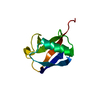 1ubqS  2wwzS C: citing same article ( S: Starting model for refinement |
|---|---|
| Similar structure data |
- Links
Links
- Assembly
Assembly
| Deposited unit | 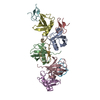
| ||||||||
|---|---|---|---|---|---|---|---|---|---|
| 1 | 
| ||||||||
| 2 | 
| ||||||||
| 3 | 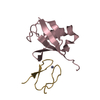
| ||||||||
| 4 | 
| ||||||||
| 5 | 
| ||||||||
| Unit cell |
|
- Components
Components
| #1: Protein | Mass: 8604.845 Da / Num. of mol.: 5 / Mutation: YES Source method: isolated from a genetically manipulated source Details: ISOPEPTIDE BONDS ACROSS BETWEEN CHAINS, A76 C AND D33 NZ, B76 C AND A33 NZ, C76C AND B33 NZ, E76 C AND C33 NZ. ISOPEPTIDE BOND ACROSS THE ASU FOR, D76 C AND E33 NZ SYMM Source: (gene. exp.)  HOMO SAPIENS (human) / Plasmid: PET17 / Production host: HOMO SAPIENS (human) / Plasmid: PET17 / Production host:  #2: Protein/peptide | Mass: 4059.696 Da / Num. of mol.: 5 / Fragment: NZF1, RESIDUES 1-33 Source method: isolated from a genetically manipulated source Source: (gene. exp.)  HOMO SAPIENS (human) / Plasmid: POPINK / Production host: HOMO SAPIENS (human) / Plasmid: POPINK / Production host:  #3: Chemical | ChemComp-ZN / Sequence details | Q96C32 REFERS TO POLYUB, WHICH IS SUBSEQUENTLY PROTEOLYSED TO THE MATURE FORM. CONTAINS ADDITIONAL ...Q96C32 REFERS TO POLYUB, WHICH IS SUBSEQUENT | |
|---|
-Experimental details
-Experiment
| Experiment | Method:  X-RAY DIFFRACTION / Number of used crystals: 1 X-RAY DIFFRACTION / Number of used crystals: 1 |
|---|
- Sample preparation
Sample preparation
| Crystal | Density Matthews: 3.99 Å3/Da / Density % sol: 69.15 % / Description: NONE |
|---|---|
| Crystal grow | pH: 6.5 Details: 20% PEG 550 MME, 10% PEG 20K, 0.12 M NA OXAMATE, 0.12 M NAF, 0.12 M NA CITRATE, 0.12 M NA/K TARTRATE 0.1 M MES/IMIDAZOLE PH 6.5 |
-Data collection
| Diffraction | Mean temperature: 110 K |
|---|---|
| Diffraction source | Source:  SYNCHROTRON / Site: SYNCHROTRON / Site:  Diamond Diamond  / Beamline: I24 / Wavelength: 0.9686 / Beamline: I24 / Wavelength: 0.9686 |
| Detector | Type: DECTRIS PILATUS / Detector: PIXEL / Date: Jun 28, 2014 |
| Radiation | Protocol: SINGLE WAVELENGTH / Monochromatic (M) / Laue (L): M / Scattering type: x-ray |
| Radiation wavelength | Wavelength: 0.9686 Å / Relative weight: 1 |
| Reflection | Resolution: 3.4→38.59 Å / Num. obs: 12855 / % possible obs: 99.9 % / Observed criterion σ(I): 2 / Redundancy: 3.4 % / Biso Wilson estimate: 83.17 Å2 / Rmerge(I) obs: 0.11 / Net I/σ(I): 6.6 |
| Reflection shell | Resolution: 3.4→3.67 Å / Redundancy: 3.4 % / Rmerge(I) obs: 0.56 / Mean I/σ(I) obs: 2 / % possible all: 100 |
- Processing
Processing
| Software |
| |||||||||||||||||||||||||||||||||||||||||||||||||||||||||||||||||||||||||||||||||||||||||||||||||||||||||||||||||||||||||||||||||||||||||||||||||||||||||||||||||||||||||||||||||||||||||||||||||||||||||||||||||||||||||||||||||||||||||||||||||||||||||||||||||||||||||||||||||||
|---|---|---|---|---|---|---|---|---|---|---|---|---|---|---|---|---|---|---|---|---|---|---|---|---|---|---|---|---|---|---|---|---|---|---|---|---|---|---|---|---|---|---|---|---|---|---|---|---|---|---|---|---|---|---|---|---|---|---|---|---|---|---|---|---|---|---|---|---|---|---|---|---|---|---|---|---|---|---|---|---|---|---|---|---|---|---|---|---|---|---|---|---|---|---|---|---|---|---|---|---|---|---|---|---|---|---|---|---|---|---|---|---|---|---|---|---|---|---|---|---|---|---|---|---|---|---|---|---|---|---|---|---|---|---|---|---|---|---|---|---|---|---|---|---|---|---|---|---|---|---|---|---|---|---|---|---|---|---|---|---|---|---|---|---|---|---|---|---|---|---|---|---|---|---|---|---|---|---|---|---|---|---|---|---|---|---|---|---|---|---|---|---|---|---|---|---|---|---|---|---|---|---|---|---|---|---|---|---|---|---|---|---|---|---|---|---|---|---|---|---|---|---|---|---|---|---|---|---|---|---|---|---|---|---|---|---|---|---|---|---|---|---|---|---|---|---|---|---|---|---|---|---|---|---|---|---|---|---|---|---|---|---|---|---|---|---|---|---|---|---|---|---|---|---|---|---|
| Refinement | Method to determine structure:  MOLECULAR REPLACEMENT MOLECULAR REPLACEMENTStarting model: PDB ENTRIES 1UBQ AND 2WWZ Resolution: 3.4→38.591 Å / SU ML: 0.38 / σ(F): 1.35 / Phase error: 24.46 / Stereochemistry target values: ML
| |||||||||||||||||||||||||||||||||||||||||||||||||||||||||||||||||||||||||||||||||||||||||||||||||||||||||||||||||||||||||||||||||||||||||||||||||||||||||||||||||||||||||||||||||||||||||||||||||||||||||||||||||||||||||||||||||||||||||||||||||||||||||||||||||||||||||||||||||||
| Solvent computation | Shrinkage radii: 0.9 Å / VDW probe radii: 1.11 Å / Solvent model: FLAT BULK SOLVENT MODEL | |||||||||||||||||||||||||||||||||||||||||||||||||||||||||||||||||||||||||||||||||||||||||||||||||||||||||||||||||||||||||||||||||||||||||||||||||||||||||||||||||||||||||||||||||||||||||||||||||||||||||||||||||||||||||||||||||||||||||||||||||||||||||||||||||||||||||||||||||||
| Displacement parameters | Biso mean: 106.53 Å2 | |||||||||||||||||||||||||||||||||||||||||||||||||||||||||||||||||||||||||||||||||||||||||||||||||||||||||||||||||||||||||||||||||||||||||||||||||||||||||||||||||||||||||||||||||||||||||||||||||||||||||||||||||||||||||||||||||||||||||||||||||||||||||||||||||||||||||||||||||||
| Refinement step | Cycle: LAST / Resolution: 3.4→38.591 Å
| |||||||||||||||||||||||||||||||||||||||||||||||||||||||||||||||||||||||||||||||||||||||||||||||||||||||||||||||||||||||||||||||||||||||||||||||||||||||||||||||||||||||||||||||||||||||||||||||||||||||||||||||||||||||||||||||||||||||||||||||||||||||||||||||||||||||||||||||||||
| Refine LS restraints |
| |||||||||||||||||||||||||||||||||||||||||||||||||||||||||||||||||||||||||||||||||||||||||||||||||||||||||||||||||||||||||||||||||||||||||||||||||||||||||||||||||||||||||||||||||||||||||||||||||||||||||||||||||||||||||||||||||||||||||||||||||||||||||||||||||||||||||||||||||||
| LS refinement shell |
| |||||||||||||||||||||||||||||||||||||||||||||||||||||||||||||||||||||||||||||||||||||||||||||||||||||||||||||||||||||||||||||||||||||||||||||||||||||||||||||||||||||||||||||||||||||||||||||||||||||||||||||||||||||||||||||||||||||||||||||||||||||||||||||||||||||||||||||||||||
| Refinement TLS params. | Method: refined / Refine-ID: X-RAY DIFFRACTION
| |||||||||||||||||||||||||||||||||||||||||||||||||||||||||||||||||||||||||||||||||||||||||||||||||||||||||||||||||||||||||||||||||||||||||||||||||||||||||||||||||||||||||||||||||||||||||||||||||||||||||||||||||||||||||||||||||||||||||||||||||||||||||||||||||||||||||||||||||||
| Refinement TLS group |
|
 Movie
Movie Controller
Controller



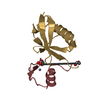
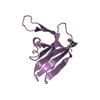




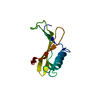

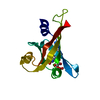

 PDBj
PDBj



















